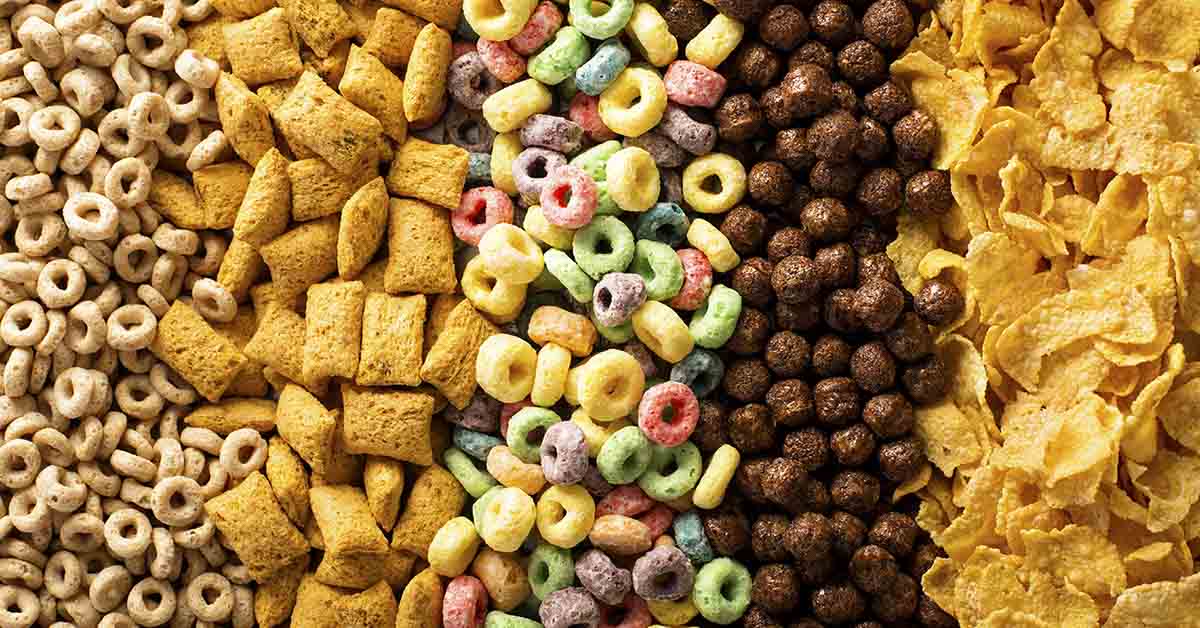Opinion
Cereal has long been a staple breakfast option for many people. It is convenient, delicious, and often associated with fond childhood memories. However, despite its popularity, there are several reasons why most breakfast cereals can be seriously unhealthy. Let’s explore the different factors contributing to cereal consumption’s unhealthy nature.
Is breakfast cereal really good for us?
We all grew up seeing cereal commercials on TV, and we will likely all remember the tagline at the end of every single one: (Insert cereal name and brand here), a part of a balanced breakfast”. At the same time, cereal may seem like a nutritious choice (and it has certainly been marketed this way), it is important to examine the ingredients and nutritional content before making that assumption. One of the primary concerns with breakfast cereals is their high sugar and refined carbohydrate content. Many cereals are loaded with added sugars, which can have detrimental effects on our health. Excessive sugar consumption has been linked to an increased risk of obesity, type 2 diabetes, heart disease, and other chronic conditions. In fact, breakfast cereals are actually the 7th largest contributor of sugar in the average American adult’s diet. Additionally, breakfast cereals made with refined grains have a high glycemic index, causing a rapid spike in blood sugar levels. (1)
Read More: It was banned by the FDA, yet it’s in hundreds of candies. Why?
Misleading marketing
Another factor contributing to the unhealthy nature of breakfast cereals is the misleading marketing surrounding these products. Cereal boxes often boast health claims such as being “low-fat,” “high in fiber,” or “fortified with vitamins and minerals.” However, these claims can be deceptive, as many cereals are still packed with added sugars and refined grains despite these so-called health benefits. It is crucial to look beyond the marketing claims and scrutinize the nutrition facts label and ingredients list to make an informed decision about the cereal we choose to consume. Aka, don’t pay attention to the front of the box, instead flip it over and read the back/side panels. The ingredient list and nutrition panel do not lie. (2)
Cereals that the FDA no longer considers healthy
The Food and Drug Administration (FDA) has stricter guidelines for what can be considered a healthy food product. In recent years, popular cereal brands such as Kellogg’s, Post, and General Mills have faced scrutiny from the FDA due to their products’ high sugar content and misleading health claims. These cereals have been found to contain excessive amounts of added sugars, which are known to have adverse health effects. It is alarming that these once-prominent breakfast options are no longer considered healthy by regulatory authorities. Cereals that are no longer on the healthy list include (3):
| Brand | Cereal |
|---|---|
| Kellogg’s | Special K Frosted Mini Wheats Raisin Bran |
| General Mills | Honey Nut Cheerios Cornflakes |
| Post | Honey Bunches of Oats, Honey Roasted |
| PepsiCo | Quaker Oats Life Cereal |
Read More: Is Oat Milk a Scam?
What to look for when cereal shopping
If you still choose to include breakfast cereal in your diet, it is important to make informed choices to minimize the negative impact on your health. When shopping for cereal, there are several key factors to consider. First, limit the amount of added sugar in the cereal. Choose options with less than 5 grams of added sugar per serving. Next, opt for cereals that are high in fiber, with at least 3 grams of fiber per serving. Pay attention to portion sizes and make sure to read the ingredients list, prioritizing whole grains and avoiding excessive sugar or artificial additives. Buyer be aware: Sugar is often listed in different forms, so watch out for all forms of sugars, syrups, and sweeteners.
Better breakfast options
While breakfast cereal may be convenient, plenty of healthier alternatives can provide a more nutritious start to your day. Whole, single-ingredient foods are excellent choices for a nutritious breakfast. For example, plain oatmeal topped with raisins and nuts is fiber-rich. Unsweetened Greek yogurt or skyr with nuts and sliced fruit provides protein and essential vitamins. Scrambled eggs with vegetables offer a balanced combination of protein, healthy fats, and nutrients. Choosing unprocessed breakfast options ensures a higher nutrient density and helps promote satiety, reducing the likelihood of overeating throughout the day.
The Bottom Line
Despite its widespread popularity, most breakfast cereals are seriously unhealthy due to their high sugar and refined carbohydrate content. Misleading marketing tactics further exacerbate the issue, making it crucial for consumers to be discerning when choosing cereal products. The FDA’s classification of certain cereals as unhealthy reinforces the need for awareness and scrutiny. When purchasing cereal, it is essential to look for lower sugar options, prioritize fiber content, and read the labels carefully. Ultimately, opting for whole, unprocessed breakfast choices provides a healthier start to the day, ensuring a more nutrient-dense and satisfying meal.
Read More: Top 15 Anti-Inflammatory Foods
Sources
- “Sources of Added Sugars Intake Among the U.S. Population: Analysis by Selected Sociodemographic Factors Using the National Health and Nutrition Examination Survey 2011–18.” Frontiers. Laurie Ricciuto, Victor L. Fulgoni III, P. Courtney Gaine, Maria O. Scott and Loretta DiFrancesco. June 2021.
- “Nutrition labels on pre-packaged foods: a systematic review.” Pubmed. Sarah Campos, Juliana Doxey and David Hammond. August 2011.
- FDA Says These Cereals Are No Longer Healthy” The Street. Sarah Jean Callahan. October 15, 2022.

